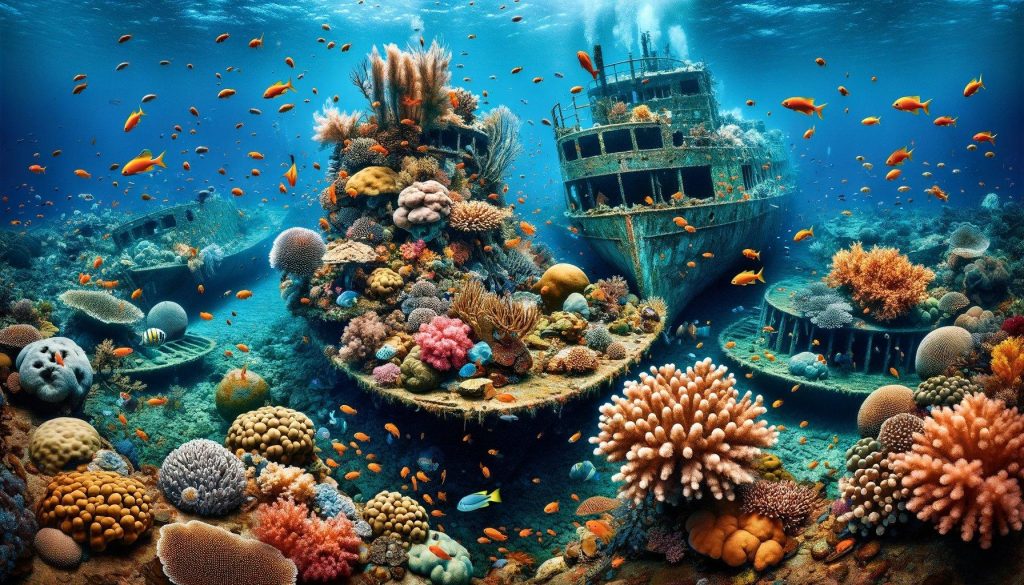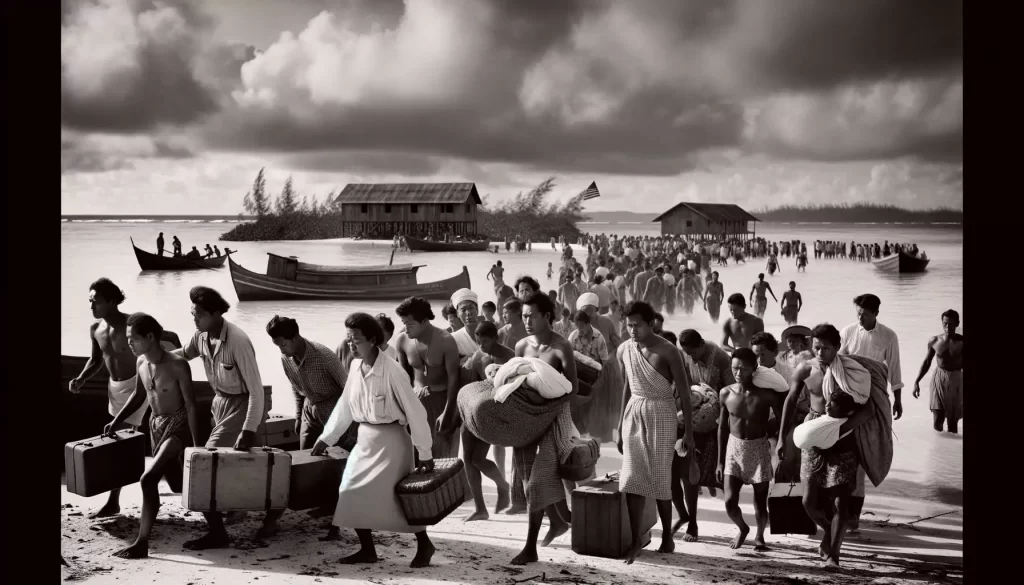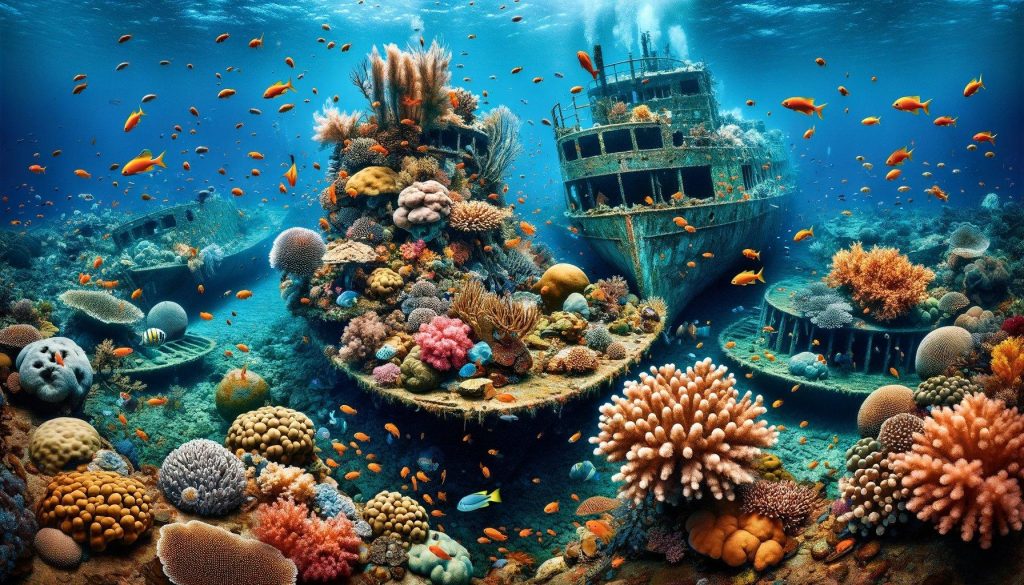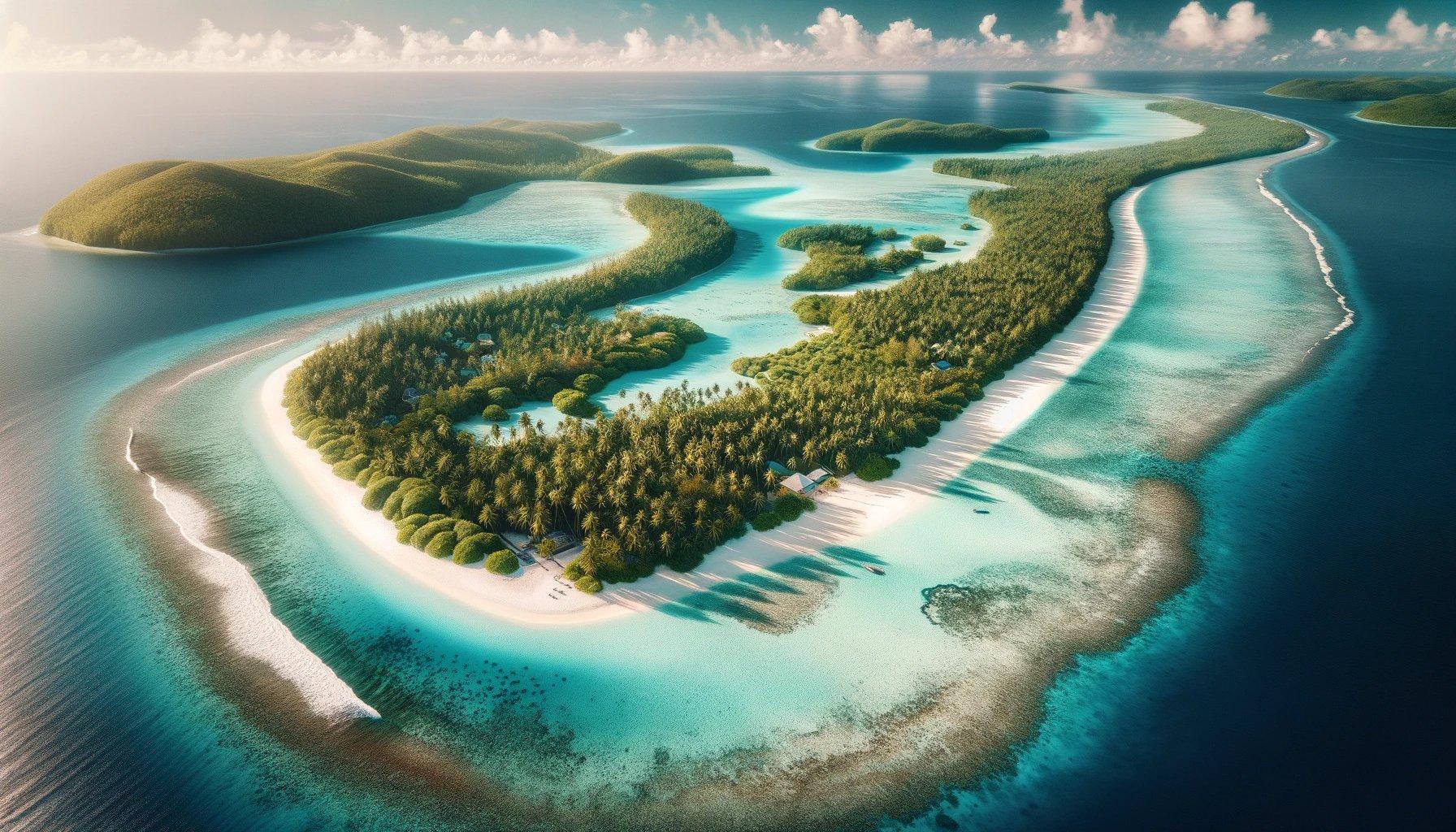Nestled in the vast Pacific Ocean, the Marshall Islands are home to a hidden gem that echoes a story of beauty and resilience: Bikini Atoll. Known for its picturesque landscapes, rich marine life, and a complex history that intertwines with global events, this atoll invites both the intrepid traveler and the curious historian. As we embark on an exploratory journey through Bikini Atoll, we uncover its layered narrative, from its pivotal role in nuclear testing to its current status as a beacon of conservation and cultural heritage. This article aims to guide, inform, and inspire, revealing the multifaceted allure of this unique paradise in the Marshall Islands.

History of Bikini Atoll
Bikini Atoll has a history as captivating as its landscapes. Initially an obscure location, it garnered global attention during the mid-20th century.
- 1946-1958 Nuclear Testing: The United States conducted nuclear tests here, forever altering the atoll’s destiny.
- Operation Crossroads: Notably, in 1946, this operation marked the first series of nuclear tests post-World War II.
- Resettlement and Legacy: The indigenous population was displaced, and the atoll’s name became synonymous with nuclear proliferation.
Significance of Bikini Atoll for the Marshall Islands
Bikini Atoll isn’t just another picturesque spot; it’s a symbol of the Marshall Islands’ resilience.
- Economic Impact: While tourism is limited, the atoll’s story attracts global interest, impacting the local economy.
- Cultural Significance: It represents a poignant chapter in the Marshall Islands’ history, echoing themes of loss, displacement, and identity.
Environmental Impact of Nuclear Testing
The legacy of nuclear testing has left indelible marks on Bikini Atoll’s environment.
- Radioactive Contamination: Residual radiation continues to affect the ecosystem.
- Geographical Alterations: Explosions transformed the landscape, creating unique geological features.

Marine Life and Coral Reefs at Bikini Atoll
Despite its turbulent past, Bikini Atoll boasts an astonishing marine ecosystem.
- Coral Reefs: These vibrant ecosystems surprisingly thrive amidst wrecked remnants of warships.
- Marine Species: Diverse species, including sharks, have made these waters their sanctuary.
Visiting Bikini Atoll: Travel Tips and Recommendations
Dreaming of visiting Bikini Atoll? Here’s what you need to know:
- Travel Documentation: Ensure you have the necessary permits and documents.
- Best Time to Visit: Plan your trip considering the tropical climate.
- Safety Measures: Understand the guidelines for safe exploration, especially concerning radiation exposure.
- Activities: Diving and snorkeling are popular, but respect the ecological sensitivity.

Cultural Heritage and Indigenous People of Bikini Atoll
The atoll’s indigenous community holds a story of resilience.
- Displacement: Understand the historical context of their forced relocation.
- Cultural Practices: Their traditions and practices offer a glimpse into a rich, albeit challenged, cultural tapestry.
Current Conservation Efforts at Bikini Atoll
Conservation is key to preserving Bikini Atoll’s legacy.
- Global Recognition: UNESCO declared it a World Heritage site in 2010.
- Local and International Efforts: Various organizations work towards ecological restoration and supporting indigenous rights.
Bikini Atoll is not just a destination; it’s a journey through history, culture, and nature’s resilience. Its story is a testament to the enduring spirit of the Marshall Islands and a poignant reminder of our environmental and cultural responsibilities.
FAQ: Bikini Atoll and Its Place in History
1. What is the historical significance of Bikini Atoll in the context of nuclear testing?
Bikini Atoll was a major test site for nuclear weapons during the atomic age, most famously known for the Bikini Atoll nuclear test. The U.S. detonated 23 nuclear devices here, marking a critical point in the nuclear arms race.
2. Are there other atolls in the Marshall Islands that were used for nuclear testing?
Yes, apart from Bikini Atoll, Enewetak Atoll in the Marshall Islands also served as a significant nuclear test site. Both these atolls were central to the U.S.’s nuclear testing program.
3. How did the nuclear tests affect the indigenous people of Bikini Atoll?
The Bikini Islanders and people living on the atoll were evacuated to make way for nuclear testing. They faced numerous challenges, including displacement and the struggle to adapt to new living conditions on islands like Kili Island and Rongerik Atoll.
4. What is the current status of Bikini Atoll with regard to radiation levels?
Bikini Atoll, years after the nuclear tests, still shows signs of radiation. The area, while seeing a recovery in natural life, remains largely uninhabitable for prolonged human settlement due to residual radiation from the atomic bomb and nuclear bomb tests.
5. Can tourists visit Bikini Atoll, and what precautions should they take?
Tourists can visit Bikini Atoll, particularly for activities like diving around the shipwrecks. However, they should be mindful of the radiation safety guidelines and understand the history and the environmental impact of the atomic bomb testing conducted there.
6. What is the ecological state of the marine life around Bikini Atoll?
Surprisingly, the marine life around Bikini Atoll has shown remarkable resilience. The coral reefs and marine species have adapted, creating a unique ecosystem amidst the shipwrecks of the nuclear explosions.
7. How did the nuclear testing at Bikini Atoll contribute to international policy on nuclear weapons?
The nuclear testing at Bikini Atoll was pivotal in raising global awareness about the dangers and environmental impact of nuclear weapons, contributing significantly to the dialogue and treaties aimed at controlling and eventually ending the nuclear weapons tests.
8. What efforts are being made to preserve the history and environment of Bikini Atoll?
There are ongoing efforts to preserve Bikini Atoll’s environment and history. It’s a UNESCO World Heritage site, with various international and local organizations working towards its conservation and educating people about the history and effects of nuclear testing in the area.

